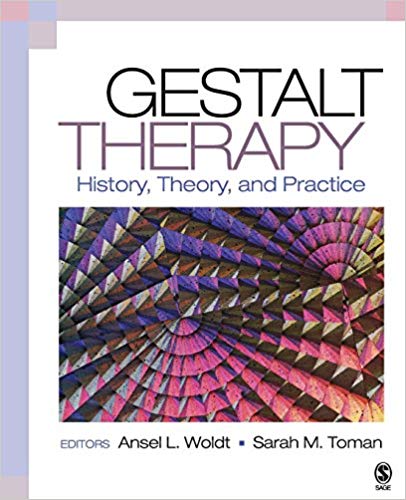Ansel L. Woldt, Sarah M. Toman – Gestalt Therapy – History, Theory, and Practice
$105 Original price was: $105.$50Current price is: $50.
Shopping Instructions:
- DISCOUNT 15% : SHOP15
- Product Delivery: Within 1 – 12 hours after purchase.
Paperback: 424 pages/ Publisher: SAGE Publications, Inc; 1 edition (January 20, 2005)/ Language: English/ ISBN-10: 0761927913/
Ansel L. Woldt, Sarah M. Toman – Gestalt Therapy – History, Theory, and Practice
Gestalt Therapy: History, Theory, and Practice is an introductory text, written by major Gestalt theorists, that will engage those new to Gestalt therapy. Editors Ansel Woldt and Sarah M. Toman introduce the historical underpinnings and fundamental concepts of Gestalt therapy and illustrate applications of those concepts to therapeutic practice. The book is unique in that it is the first Gestalt text specifically designed for the academic and training institute settings. Gestalt Therapy takes both a conceptual and a practical approach to examining classic and cutting-edge constructs.
Review
“This is an incredibly important addition to the world of psychotherapy and Gestalt, in particular. This book will be very helpful for use with various courses of study, not just Gestalt institutes and special training programs, but also general graduate school classes in masters programs for mental health, social work, counseling, allied health professionals, psychiatry, and psychology. I highly recommend this book. I think it will make an excellent contribution.”
Author: Norman Shub Published On: 2004-08-23
“Ansel L. Woldt and Sarah M. Toman have put together a monumental text that fills a gap in the genre of serious Gestalt literature that has remained relatively empty since Perls, Hefferline, and Goodman′s Gestalt Therapy was published in 1951. This is not to say that there haven′t been extraordinary works in this field published since then; however, this is one of the most expansive books of the recent collection. Each of the chapter authors has written impressive selections that, taken one-by-one, are valuable additions for serious students and practitioners. What earns this book an evaluation as extraordinary is both the content and the structure.”
Author: J. Edward Lynch Published On: 2004-08-23
“The format is intriguing, lively, and the ′dialogue′ sections will allow other voices to speak because, as with all good theory, there is not unanimity regarding the nature and/or importance of various concepts.”
Author: Lynne Jacobs Published On: 2003-08-23
Related products
Personal Development
Mike Reinold – Inner Circle – Assessing the Shoulder Shrug Sign
Personal Development
Personal Development
Garrett J White – WARRIOR .THE BLACK BOOK . How To Master Art And Science Of Having It All
Personal Development
John Dupuy ft Leigh Spusta – iAwake Technologies – Deeply Theta
Personal Development
Personal Development
Tony Robbins – New Money Masters Elite + Bonuses [Complete Version]
Personal Development
Personal Development
ThinkEatLift – Radu Antoniu. Andrei Antoniu – Unstoppable Discipline










![Tony Robbins – New Money Masters Elite + Bonuses [complete Version]](https://copicourse.com/wp-content/uploads/2021/08/tony-robbins-new-money-masters-elite-bonuses-complete-version-300x400.jpg)

